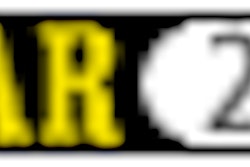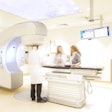
This is the third in an ongoing series of bilingual articles written for the radiology community in general, and the Spanish-speaking community in particular.
As mentioned in an AuntMinnie.com article last May, the Spanish Society of Medical Radiology (SERAM) will hold its national congress in the Canary Islands next week, May 11-14. A full scientific program and advanced communications technology highlight the conference, which will host nearly 1,400 attendees in Maspalomas, as well as thousands of online visitors at the Spanish-language SERAM Web site.
From more than 1,500 submissions (both poster and oral presentations), the scientific committee has chosen about 600 for the meeting. Using a Web-based submission and evaluation system, members of the various scientific subcommittes who chose the abstracts were blinded to the institutional affiliations of the radiologists who submitted them.
Scientific program highlights include general auditorium sessions such as the categorical course on cardiovascular pathology, which includes a course syllabus book. Each afternoon in the auditorium, cases of the day and case readings will cover diagnostic problems that attendees can attempt to solve earlier in the day in large-screen format using the congress intranet.
After viewing each case, participants will submit a diagnosis. Their answers will be recorded by the system, which will serve to recognize the highest achievers, and allow participants to evaluate their own work.
The scientific program will also feature more than 100 refresher courses, roundtables and workshops in the rooms of 11 different sections which constitute the meeting. Program highlights include:
- Abdomen: multimodality liver, pancreas, stomach; small intestine and colon imaging.
- Genitourinary: Imaging of the kidney, bladder and prostate; focal and diffuse hepatic lesions; abdominal PET; MRI in gynecology.
- Breast: BI-RADS system controversies; variability in mammographic interpretation, invasive techniques and interventional procedures; US and MRI of the breast.
- Thorax: pulmonary neoplasms; postoperative thorax; infections and AIDS; cardiovascular pathology; airway studies.
- Musculoskeletal: arthritis imaging; MRI of joint cartilege; percutaneous bone biopsy; Doppler US of the tendons; contrast MRI of the wrist; MRI of the hip.
- Neuroradiology: head injuries; neuroophthalmologic studies; MRI of neurodegenerative diseases; functional MRI, myelopathy studies; facial neuopathy and epilepsy; neck studies.
- Pediatrics: abdominal Doppler US; pelvic masses; optimization of CT and MRI studies; cardiac MRI; pediatric emergencies; studies of orbit and temporal bone.
- Pre- and postgraduate training: radiology and the university; doctoral theses; career education; radiology in medical studies; CME; radiology residency.
- Organization and quality: organization of radiology services; total quality training; ethics; economics, marketing and environment; future training.
- Information and communication technologies (IT): evidence-based medicine and radiology; digital radiology course; PACS and teleradiology; RIS/PACS and the impact in radiology clinics; radiology and the Internet; RADIOLOGY-EUFORA mailing lists.
- Ultrasound: of the knee and ankle; interventional techniques, US of the neck, rheumatology and sonography, accessing the main arteries; treatment of hepatic tumors; biliary ducts.
A central computer and server will distribute the presentations to the various meeting rooms, where they will be displayed by the multimedia equipment. All presentations will be presented in a uniform format. Beginning the presentation starts a timer that monitors the assigned presentation time. All oral presentations will be loaded into the central server, making the use of slides and laptop computers unnecessary.
In the auditorium, the multimedia projection system is linked to three video screens. The IT conference room has several networked computers to enable the monitoring of training courses, and the presentation of digital data. Another area is dedicated to workstation demonstrations and courses. Several presentations in this section will be available as a videoconferences on the Web.
Other technical features include the use of large plasma monitors in the hallways to communicate conference alerts and enable video monitoring of the presentations from outside the rooms (each room is equipped with a microphone and webcam).
Touch-screen monitors will let attendees navigate the conference schedule and submit answers to the case of the day, as well as exchange e-mail internally with other participants. Computers in various locations will enable connections to the Internet and the intranet, where attendees will find complete information about the conference.
Access to the rooms will be controlled by means of bar codes and readers, which will also be used for accreditation of attendees at CME courses. As for printed materials, in addition to the cardiovascular pathology syllabus, there is a congress manual, and two refresher course volumes containing all of the poster presentations.
Extensive conference information is available on the Internet at http://www.seram.es/. "Congreso Online" will feature video and sound direct from the rooms, recorded conferences presented in streaming video, PowerPoint presentations, and teaching materials in pdf files.
Radiologists who can't attend the meeting, especially those who speak Spanish, are invited to follow some of the conference sessions on the Web.
By Dr. Francisco Javier Rodríguez RecioAuntMinnie.com contributing writer
English translation by Eric Barnes
May 5, 2002
Dr. Francisco Javier Rodríguez Recio heads the information technology section of the scientific committee of the XXVI National SERAM Congress. He also serves as administrator of the RADIOLOGIA news group, a forum for discussion, debate, and education in the Spanish-speaking radiology community. Dr. Rodríguez Recio is chief of diagnostic radiology at the Soria General Hospital, and associate professor of radiology at the University of Valladolid, Spain. He can be contacted at [email protected].
Related Reading
Spanish radiology meeting gets wired, May 7, 2001
Radiología news list informs, unites Spanish-speaking radiology community, May 5, 2000
Copyright © 2002 AuntMinnie.com.

















